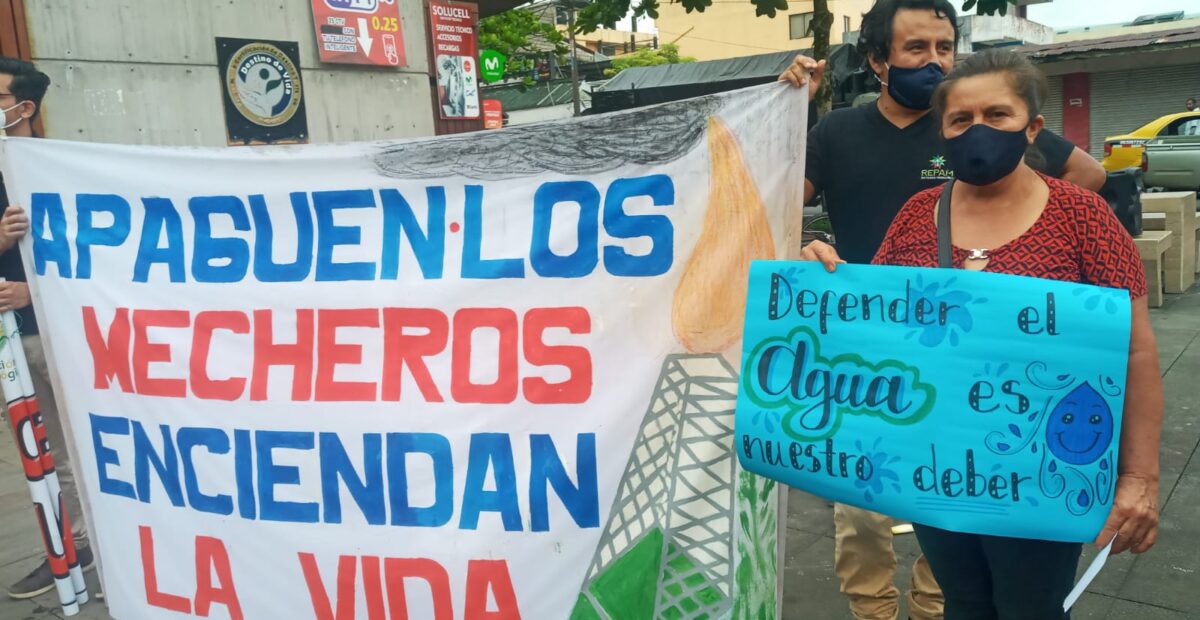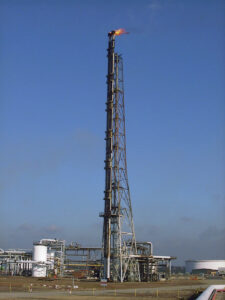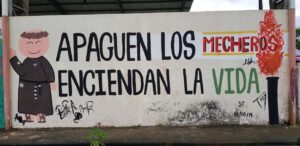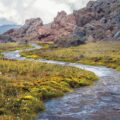
Workshop
The Ecuadorian Amazon and the problem of gas flaring

In this territory full of natural riches and biodiversity, oil companies burn natural gas “waste” (actually useful), polluting and causing serious damage to the health of those who live in the area.
Forests, rivers, lagoons, waterfalls, thousands of animal species, medicinal plants, sacred mountains: all this, and much more, is the Ecuadorian Amazon. Many indigenous communities also live there: the Quechua, Huaorani, Kickwa, Taromenani and many other peoples, some of whom live right in the middle of the forest, in close contact with nature.
Since 50 years, however, this territory has begun to change its face: large parts of the territory have been sold to farmers, who have deforested entire areas to make fields for cultivation, and extract wood to sell. Another discovery, then, brought about a real environmental shock: the discovery of large oil fields just below these territories. Black gold began to be extracted, and this activity involved the construction of hundreds of oil flares. These “flaming towers” burn natural gases found underground that are released when oil is extracted. While these are potentially useful gases (often methane gas, used in cooking), they are not reused, as the process would be too costly for the oil company: they are therefore considered as waste gas and burned, producing enormous quantities of Co2. This is the process commonly referred to as gas flaring (“gas combustion”): a waste of natural resources, as well as a source of pollution for the environment and for humankind. And there is an even more alarming fact: in the Ecuadorian Amazon territory there are 447 flares, burn day and night, 7 days a week.
To learn more, we interviewed Txarli, a Capuchin friar who lives in the Ecuadorian Amazon, in Tiputini, and who fights so that his territory and the communities that live there are not exploited and mistreated, as is happening now.

“The flares have been burning natural gas day and night for 50 years. In addition to the environmental damage, think of the waste! The state pays a lot of money to buy the gas we consume in the kitchens of our homes, and at the same time here we are burning 5 times the amount of gas we would need, and which could also be used for the engines of companies, constituting a profit for them too. By eliminating the flares, and harnessing natural gas, the state would gain.”
So why are they not shut down? According to Txarli, the main reason is corruption. There are now business relationships that do not want to be changed, and therefore there is no interest to set in motion a change. But the situation is really serious, if you also consider the terrible health consequences of pollution on the people living there: respiratory and cancer diseases, which have already started to occur in many people.
“The only means we have to fight this is through protest. We’ve tried to follow the path of justice, but it hasn’t helped.” Txarli tells me that 9 girls, whose parents are cancer patients, appeared at a judicial trial to denounce to the court of the province of Sucumbíos the violation of human rights (health and welfare of the person) and the rights of nature, because of the flares. The judge condemned this violation of rights and demanded that in 18 months all oil flares near the population be down. So far nothing has been done; instead, special permits have been granted to oil companies. The trust that these people placed in the State is now betrayed, and they are left with no other means but to protest: to make their voices heard. To do so, the inhabitants of these territories are supported by other environmental and medical associations, which support them in their battle. But it is not easy.

I ask Txarli what message he would like to convey. He answers me as follows: “This land that God has blessed is wonderful, sacred, it is a land of breathtaking beauty, of biodiversity. But some people are destroying this heritage that belongs to all humanity. Those who destroy this land do not live here, yet they are also destroying a piece of (also) their common home. We can all be part of the defense of the Amazon, even from Europe or North America. Everyone can do something, starting with limiting their own carbon footprint released into the planet. We have set ourselves a goal: plant new trees and pollute 25% less each year. But it’s an invitation to everyone. How do we do it? Let’s start small: use public transportation, eat less meat, recycle.”
To understand how to be less polluting, you need to understand how much you are now. To do this, you can use various platforms that help you measure your “carbon footprint”, i.e. the CO2 footprint that each of us emits into the planet. By measuring it, you realize how much you can do to start decreasing it. Awareness is the first step towards improvement.
“We are all polluters” – Txarli concludes – “but we must fight for change: no longer be part of the problem, but part of the solution.”






